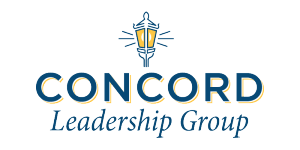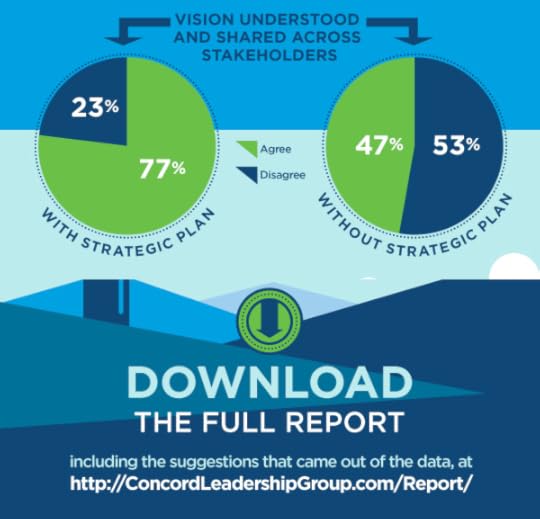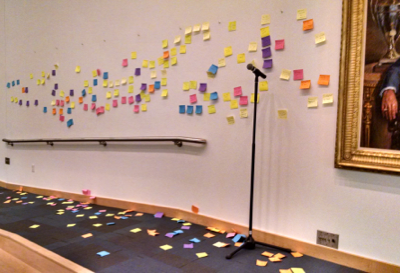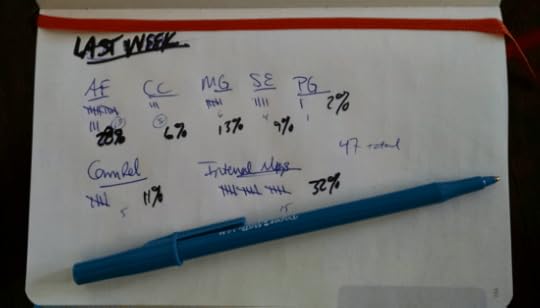Marc A. Pitman's Blog, page 28
April 6, 2016
[GUEST POST] How Small Shops Can Overcome the Challenges of Fundraising Software
Too many nonprofits think that choosing a fundraising software provider is the end of a journey. It's really just the beginning. Using software is essential, but the use you'll get from it is only as good as your data and the training your provide your team. And the tools keep changing, so it's likely that you are trying to work with lots of different types of software! I've asked Blake Groves, VP of Strategy and Business Development at Salsa Labs to share what he sees most helps small nonprofits. With over 20 years in technology, he has seen it all! These four steps, while deceptively simple, will significantly help you in your nonprofit fundraising.How Small Shops Can Overcome the Challenges of Using Different Types of Fundraising Software

by Blake Groves, VP at Salsa Labs
You’ve likely heard the word synergy thrown around in sort of vague terms, slapped onto the end of other words (corporate synergy, anyone?), and universally understood to mean some sort of coming together.
By definition, synergy refers to when different entities join forces to be a greater whole than the sum of their parts. Sound familiar?
Synergy is awesome in theory, but much harder to pull off in practice.
When it comes to attempted synergy, small nonprofits juggling multiple pieces of fundraising software understand the struggle.
Life can be tough out there for a small shop.
But last year’s $358.38 billion in charitable giving didn’t just go to the biggest nonprofits!
With proactive planning, your organization can overcome some of the struggles attributed to managing too many pieces of software. This article is designed to help you do just that!
Effective and cohesive fundraising software is one of the keys to successful donor management. 4 steps to guide your small nonprofit to better, more streamlined fundraising
If you want to jump ahead to a particular section, the four tips we’ll be covering are:
Clean your data.Set clear, reachable goals.Focus on team unity.Embrace change.From advocacy campaigns to major giving and everything thing in between, ineffective use of fundraising software touches all aspects of your nonprofit’s endeavors. Let’s get to problem solving!
Clean your data.No matter where your donor data is housed, whether it’s in an Excel sheet or a CRM, it’s far more useful when it is organized, accurate, and up-to-date. Or rather...when it is clean.
You don’t have to have the most advanced donor database in the world to make the most of it.
In fact, if you’re in a situation where you’re using one type of software as a database, another to communicate with donors, another to collect donations, and so on, it is even more critical that your data is clean.
The more steps you’re taking with your donor data between collection and storage, the more room you create for errors.
For example, imagine the encounters that might occur while going through the process of identifying, cultivating, soliciting, and stewarding a major gift prospect.
Throughout that series of events, the donor interacts with numerous members of your nonprofit in numerous ways — storing more and more information in your database as time goes by. There are plenty of opportunities for error in those instances.
Don’t worry, though. You can avoid some of these potential pitfalls.
Clean data starts the process off on solid ground.
A few data-cleaning tips include:
Remove donor files that are inactive. Don’t hoard donor files! If a donor hasn’t given in the past few years, it’s time to make room for another, more involved donor.Clear out duplicates. It’s easy to build up duplicate information over time. Purge your database of repetitive information.Update any relevant details on your pre-existing donors. Did a donor switch addresses? Get married and change names? Make sure your data accounts for those new changes.The takeaway: our donor data is filled with valuable, predictive information. Make sure it is functioning at maximum efficiency.Set clear, reachable goals.
Your organization might have less software capacity than you’d like, but that shouldn’t hold you back.
If you set defined goals, those aims can give your team the necessary guidance to pull together your various software and maximize their efficiency.
The main reason goal setting is so fruitful is because it forces you to plan. And planning cannot be overemphasized when we start talking about strategies to overcome these kinds of disconnected software problems.
As this very blog has advised, “Check your plan. Successful fundraising isn’t flashy. It’s the result of consistent, reliable, strategic choices.”
Before you start a campaign, consider how each piece of fundraising software fits into the equation.
Ask questions such as:How is our online donation page going to link up with the appeal we’re sending out through our email client?
Where do fundraising tools like mobile giving software fit inWhat are we going to use to measure performanceAnd other queries along those lines.
And of course, a big question at the center of all this should be: How is the donor data we collect going to be logged, stored, and handled in the database?
The takeaway: As your plan comes into focus, you’ll want to note the role of each technology service you use and how those services interact and factor into the big picture. Then, set your goals accordingly.
Focus on team unity.If you want your software unified, your team needs to be unified too.
The less connected and streamlined your software is, the more opportunities there are for human error. Account for that reality by placing an emphasis on team unity.
Make sure that everyone:Understands their role: You can’t spell team without the T, E, A, and M. Ensure that each metaphorical letter on your staff knows what’s expected of them and their fellow staffers with regard to handling the software.Recognizes the standard practices for managing the software: You can compensate for using various pieces of technology by putting standardized systems in place for how fundraisers interact with the software. For instance, if your organization is at the stage where you’re using an Excel sheet to store donor data, have strict guidelines for how that data should be entered.Keeps lines of communication open: Transparency is crucial to maintaining accuracy and top-level performance. Open lines of communication facilitate transparency among team members.
The takeaway: Your software is only as good as your team. Your team can be great, as long as they’re managed effectively.
Embrace change.As you embark on these improvement tactics and others, you’ll start to see marked advancements in your performance. Recognize when that is happening and when it might be time to consolidate and upgrade.
Once you maximize performance with your current software state, look to improve your situation so that your organization can keep growing.
For instance, your organization might have gotten heavily involved in online advocacy over time. When your program has developed, you should probably consider looking into software solutions for the kind of work you’re doing.
The takeaway: Migrating information and restarting with new technology can be scary, but it’s better to transition when you’re ready rather than wait until your organization exceeds the capacity of your current suite of software.
Thanks to modern technological developments, there are excellent, affordable software solutions out there for nonprofits of all sizes.
From all-in-one donor management systems to text-to-give tools to payment processing platforms and more, if you’re looking for fundraising help from technology, you can take your pick of the litter.
Just remember to improve your software base as your nonprofit grows its donor base.
The post [GUEST POST] How Small Shops Can Overcome the Challenges of Fundraising Software appeared first on FundraisingCoach.com.






April 5, 2016
Fundraising like Linus: what security blanket are you clinging to?
Last week, I sent out a fundraising coaching email to Fundraising Kick subscribers asking them if they were fundraising like Linus.
My grandfather loved Charles Schulz's Peanuts comics. Everytime we went to his house, we’d see lots of Peanuts characters: Charlie Brown, Snoopy, Lucy, Pigpen. And Linus.
Do you remember Linus? I’d post a picture here but I don’t want to violate copyright laws. Linus was the one who walked everywhere with his blue security blanket. And often sucking his thumb.
The important question is: Are you fundraising like Linus?What is your security blanket?
 What are you clinging to? What do you hold on to for safety?
What are you clinging to? What do you hold on to for safety?
For many nonprofit leaders, when it comes to fundraising they cling to:
Names on a prospect listThey feel more comfortable with a list of names rather than actually approaching the list and facing rejection.More research
Some leaders hold off asking because they feel they need just one more bit of research. They need to know one more thing before they’ll actually approach their list.Blaming other people
The board isn’t asking; the staff isn’t asking; the [fill in the blank] isn’t doing their part.Each of these will kill your fundraising.
Blame never inspires people to act generously. At some point you'll need to own up to the fact that you need to do the fundraising.
Research can help but no one ever gave a gift because they you found out one more bit information about them. People give because they're asked.
And no bills get paid from a list of possible donors. Gifts only come in by moving through the names on your list. I've seen people cling to prospects lists for years, happy to have such a long list of potential, while their fundraising fails around them.
Don't be like them.
Don't hide behind your security blanketSecurity blankets are fine. But recognize them for what they are: things to bring comfort. Comfort is fine, but to succeed at anything you're doing to need to risk. Risk rejection. Risk being misunderstood. Risk making mistakes.
You need to move beyond the comfort to fund your nonprofit. Unfortunately, too many hide behind the blankets. I encouraged Fundraising Kick subscribers, to pay attention to the excuses in your head as you go about approaching your donor prospects. As they used to say in the G.I. Joe cartoon, “knowing is half the battle”!
What about you?What are you telling yourself that is keeping you from asking? What are you clinging to? Let us know in the comments.
Would you be helped by getting fundraising coaching emails every week? Sign up at http://FundraisingKick.com/The post Fundraising like Linus: what security blanket are you clinging to? appeared first on FundraisingCoach.com.






March 29, 2016
What is The Concord Leadership Group LLC?
Some of you have been seeing my name associated with at group called "The Concord Leadership Group LLC." You've seen it mentioned in the emails you get from The Fundraising Coach. And over the last few weeks, since the release of the nonprofit sector leadership report, you've probably seen more and more posts from The Concord Leadership Group.
Hey Fundraising Coach, what's is The Concord Leadership Group LLCI'm increasingly being asked "The Concord Leadership Group? What is that?" After replying privately to dozens of people, I thought I'd explain more fully here too.
The short versionThe Concord Leadership Group LLC now runs both The Fundraising Coach and The Nonprofit Academy.
The back storyOver the last five years, a growing number of you have been hiring me to help with your leadership. You've told me: "I don't want the 'fundraising' help. I want help with:
orienting my board to be effective trustees in all waysimproving my employee satisfactionworking with a unionized labor forcefiguring out how "corporators" fit in our nonprofit structurehandling bullying by my board of directors.And, frankly, in hiring me for these projects, you've told me that while you love the Fundraising Coach style, you wish you had a website that wouldn't cause your board to say, "But we don't need 'fundraising' help."
I have been thrilled. I have always been a leadership coach. My Masters is in Organizational Leadership. My coach certification is through FranklinCovey. And, twelve years ago when I started The Fundraising Coach, it was because fundraising is all about leadership: mission, vision, values, performance evaluation, etc.
Why "Concord"?So we needed to think of what we'd call this new entity. We've been in a long season of dreaming and strategizing. We brainstormed our values and passions. I have lists and lists of words to describe what we do - even researching them in Swedish, Greek, Hebrew, Latin, and Sanskrit for possibly company names.
"FINCHLEY"I originally wanted to call this The Finchley Leadership Group because I love the line in the Narnia movie: "You must have the wrong people. We're not heros. We're from Finchley."
I love working with leaders like this: leaders, true royalty, who are willing to grow into their greatness but aren't enamored with themselves. But since I could only find that line in the Disney movie, I opted to go a different route. I wanted something a bit more universal and less open to a lawsuit.
But I did retain the Narnia-esque connection by having the lamppost be my firm's symbol!
While seeking an appropriate name for the firm, one that described us without sounding cute or corny or flakey, I came across the word "concord" in Benjamin Franklin's Autobiography. No, not the town, but the actual word.
Something about "concord" resonated with all the other terms we'd brainstormed. In studying the etymology, I discovered that concord in part comes from the Latin "of one mind" or "together with heart."
Wow.
This describes the transformation I see in the leaders I coach. Many come to me with split minds and conflicting emotions. I get to help them back into harmony and integrity. So The Concord Leadership Group LLC was created. The group includes:
the low-cost training of The Nonprofit Academy andspecific coaching and training of The Fundraising Coach.I will still run The Fundraising Coach as you are used to it: blogging, writing the Ask Without Fear! email newsletters, sending the Fundraising Kick coaching emails, and doing the speaking an training you expect. And The Nonprofit Academy members will still receive instant access to over 80 trainings, tools, and templates and new live trainings and new live coaching calls each month.
But if you are a leader, The Concord Leadership Group could be a bright light. Over the last few years, our leadership work has already helped leaders grow employee satisfaction by double digits in a year, strategize working with bullying boards (even though the same boards hired them!), and helped CEOs create goals that bring harmony to their team and unify it around their common mission.
Rather than just "put up a website," we spearheaded a several months long research project with seven other organizations examining leadership in the nonprofit sector. You can download a free copy of that report at: http://concordleadershipgroup.com/report/.
That's the story. And for us, the story feels like it's just beginning.The post What is The Concord Leadership Group LLC? appeared first on FundraisingCoach.com.






March 25, 2016
Are you following up on your quality of life? #followupfriday
 It's Follow Up Friday! In most of my #followupfriday email reminders, I encourage subscribers to reach out to people or following up on uncompleted tasks. Often they're following up with donors and prospects and staff.
It's Follow Up Friday! In most of my #followupfriday email reminders, I encourage subscribers to reach out to people or following up on uncompleted tasks. Often they're following up with donors and prospects and staff.
But today, I invited them to do a follow up of another kind: follow up on their career goals.
Yesterday, I worked on slides for a seminar I'm co-presenting with Meghan Godorov and Mazarine Treyz next month as part of the Fundraising Career Conference. We're going to teach people how to negotiate a raise! We will cover lots of strategy to use and phrases to say. But we start with helping people figure out what they want as a target salary and what they want as a "minimum acceptable" salary. This includes reminding people to consider quality of life goals. Often, freedom or flexibility can be more valuable then income.
I was so inspired, I set aside #followupfriday time earlier today to revisit my own quality of life goals - both the aspirational and the acceptable. Rather than looking at lists of people to follow up with, I spent 30 minutes crunching numbers, reviewing my life goals, and scanning my calendar to see if my time was in alignment with the person I want to be. It's amazingly centering to reflect and reassess!Reserve some #followupfriday for yourself
So this #FollowUpFriday, why not revisit your own quality of life goals. As Stephen Covey used to say, begin with the end in mind.
Consider who you want to be and what you want to be known for.Review your current income and expenses and see if they line up.And review your time, are you spending it on the tasks and with the people that will help you be the person you want to be?Let us know what follow up you do today by leaving a comment at http://FollowUpFriday.org/ or by using the hashtag #FollowUpFriday when you post to social media.
And be sure to check out the Fundraising Career Conference. It starts April 6 and is going to be pretty amazing. Our session is only one of three full days of seminars! You can see a list of the presenters and session, and register for the conference, at: http://register2016.fundraising-career-conference.com/
The post Are you following up on your quality of life? #followupfriday appeared first on FundraisingCoach.com.






March 22, 2016
Have you tried fundraising in a "vision vacuum"?
I've been a leadership guy a lot longer than I've been a fundraising coach. In fact, one of the things I love about nonprofit fundraising is that fundraising impacts all areas of leadership: mission, vision, values, staff recruitment and retention, communicating vision. Everything.
Have you ever been in that situation?Have you ever had to fundraise in a nonprofit that lacked vision? Or under a CEO who didn't have a plan? If you're like me, you find yourself starting to cast a vision yourself - even if you're not the top leader! I once found myself doing that at a hospital. During one period of leadership, there was a void in vision. In hindsight, I realize the hospital was transitioning so the interim leader probably didn't want to tie the hands of whoever was brought in as CEO. At the time, I just new that it was challenging to raise funds. Donors, and the community, wanted to know where the hospital was going. So as the head of the foundation, I created a vision for my department and shared that vision with donors.
Or, have you been a nonprofit leader who found it hard to communicate your vision in a way that everyone understood, the board, the staff, the donors, and the community?
In the recently released leadership report from our leadership coaching firm, The Concord Leadership Group, we discovered a surprise about vision.
Strategic plans and communicating vision for fundraisingNearly two-thirds of those who took the survey say their nonprofit has a vision that is shared across all stakeholders. So that means 1 out of 3 says that theirs doesn't.
But we discovered an interesting trend. When we sorted the responses between those with a written strategic plan and those without one, we found this: less than half of those in organizations lacking a strategic plan felt they had a vision that communicated across stakeholder groups!
There is a lot more data in the report, but this one finding alone indicates that having a strategic plan gives you a leg up on communicating a shared vision. And that gives you a head start on successful fundraising!
So if you're currently struggling to get your story out, and 62% of those who took the survey said they were, than look to your strategic plan. Even if you're not the CEO. Leaders exist at all levels. If you nonprofit is lacking a strategic plan, you can create one for your division. Or even for your personal role in the organization.
There are four simple questions for starting your strategic plan in the report. You can download the report for free at: Nonprofit Sector Leadership Report.
Your strategic plan can help you from having to fundraise in a vision vacuum!
The post Have you tried fundraising in a "vision vacuum"? appeared first on FundraisingCoach.com.






March 1, 2016
Is your community suffering from an attack of a charity ideology?
If you are paying attention to government actions and media reports, it is easy to see that nonprofit work is under consistent attack. Local and state governments are threatening to tax charities. Federal governments are testing new regulations that would never be considered on corporations. And media reports of charity scams or questionable spending leave the impression that all nonprofits are suspect.
The force of this has been particularly felt by our colleagues in the UK, but it seems to be happening across countries. The odd thing? It's not coming from one specific party, or group, or demographic. If it were, we would have an easier time addressing it.
 Ian MacQuillan, director of Rogare, the fundraising think tank at Plymouth University’s Centre for Sustainable Philanthropy, says:
Ian MacQuillan, director of Rogare, the fundraising think tank at Plymouth University’s Centre for Sustainable Philanthropy, says:
"For the past four or five years, the charity sector, and fundraising in particular, has been subject to a coherent and consistent (though not necessarily co-ordinated – I’ll leave that as an open question for now) assault on its foundations as this ideology has tried to subvert the way charities currently try to do things."
In the first of three blog posts on this issue, he describes what an ideology is and says the attack is "actually a charity ideology – an ideology that prescribes how the voluntary sector ought to go about its operations."
Having looked at what makes up an ideology, in the second post, he describes what makes up this specific ideology. What's critical for us in nonprofits to see is that the opposition isn't just about "what" nonprofits should do but doing to the very core of "how" they should do it.
He describes the basic tenets are:
Charities should be run on an ethos of self-sacrificial, voluntary serviceThis focuses more on people being self-sacrificial, or "committed to the mission," than on what the charities' outcomes really are. Effectiveness isn't important, sacrifice is.Decisions to help charities should be entirely within a person's control
Beyond just saying people should have a voluntary choice, this makes charities' actually asking for support seem distasteful and inappropriate.Charities should concentrate on directly helping people - 'Stick to their knitting'
Charities should just keep their heads down and do good work. They should not strive for societal or governmental change.The Third Sector should be subservient to State
Despite the historical independent role of the charitable sector, sometimes even keeping government accountable, this ideology says the entire sector should become an "arm of the state," doing work only from government grants and contracts. Which begs the question, if charities are solely funded by taxes, how is the support "entirely within a person's control" (tenet #2)?
In this ideology, the "good guys" are small organizations with no staff who do not make others uncomfortable, especially by asking people for money. He says:
"throwing starfish back into the sea = good; lobbying government to build a breakwater to stop starfish getting washed on to beach = bad
Furthermore, putting pressure on people or the government to build the breakwater would be seen as unethical.
How then shall we respond?In part three, he deals with how we can respond to an ideological assault. He points out that we in the nonprofit sector ought to think twice before directly answering allegations from the opposing ideology. To do so, he states:
"...comes across as special pleading, as one almost always does when one is forced into declaring: ‘No, I’m not unethical, honestly!’ Any rebuttal is inevitably shaped and structured by the argument it is attempting to confront."
Ian argues that first we need to understand that ideologies are not necessarily tied to logic. For example, in the UK there is increasing talk of "the right to be left alone."
The claim that people have a ‘right to be left alone’ receives no theoretical support or justification. We’re not given any reason to suppose that such a right even exists, or from where it derives any authority. Do we have a right to be left alone from everyone (including individuals) or just organisations? If it’s only from charities, why don’t we have a similar right to be left alone from or other marketers (none of us has a ‘right to be left alone’ from Amazon, or the BBC, or the Green Party)? However, the right to be left alone from charities appears only to apply to fundraising asks and not other types of communications? Why does a member of the public have the right to be left alone from an ActionAid fundraiser but not an ActionAid campaigner?
He persuasively shows how this ideological attack, and a promising alternative ideology, both contain a strong anti-fundraising bent, considering fundraising to be a "necessary evil." In the UK, guidelines are being drafted that would tell trustees they need to write all fundraising material! Many of you will immediately see how disastrous that would be to a nonprofit's ability to meaningfully connect with donors. If you don't, think about what a mess it would be if trustees were told they had to prepare their nonprofit's tax returns without any help from professionals!
Needed: Strong nonprofit leaders and vocal fundraisers to mount a defense, without becoming defensiveSo a concerted response requires strong nonprofit leadership, it calls on the particular effort of fundraisers.
"As we said in our recently-concluded review of relationship fundraising, the onus to build good working relationships with colleagues, peers and boards – in order to dispel the ‘necessary evil’ notion – has to come from fundraisers, since it doesn’t seem likely the impetus will come from anyone else."
Creating a new ideology, or revising an existing ideology can seem lofty. But as nonprofit leaders, I believe we all are involved with fundraising. So we need to continue to not just be well versed on the key metrics at our organizations, but we need to also be up on the current research. As a member of Rogare, I am particularly enthusiastic about its work and the work of the Centre for Sustainable Philanthropy. (See more on the recent study of relationship fundraising.) If keeping up on the research seems too labor intensive, we also need to keep reminding nonprofit supervisors and boards that fundraising is indeed a profession. We should be able to clearly share why we fundraise the way we are, and share what testing we're doing to ensure we're improving. And those nominated to serve on a board and those hired to run nonprofits should seek some training in fundraising basics.
And as we work toward a common ideology, we can all strive to get better at telling our story. As Blue Frog's Mark Phillips said in a recent podcast, much of what is happening in the UK (and here in North America too) is due to nonprofit professionals not developing relationships with media and elected officials.
This storytelling can start from the assumption that most people want charities to do good work. Focusing continually on the mission will help unify people. Just educating people won't be effective. They need to see the impact of our work. And the affect it will have if our nonprofits cease to exist.
And as you're doing that, go and read Ian's three posts. The work you do is worth investing time into reading the three posts in the "OPINION: THE IDEOLOGICAL ATTACK ON FUNDRAISING" series:
PART 1 – HAPPENSTANCE, COINCIDENCE, OR ENEMY ACTION?PART 2 – ARE YOU A VOLUNTARIST OR A PROFESSIONALIST?PART 3 – WHY WE NEED AN IDEOLOGICAL DEFENCEThe post Is your community suffering from an attack of a charity ideology? appeared first on FundraisingCoach.com.






February 22, 2016
Watch the fundraising objections fall to the floor
Last week, I was invited to give a full day Ask Without Fear!® training in Kansas City. We had a blast.
One of the exercises involved overcoming objections…even before they come up. The process was:
The participants pictured someone on their “chicken list” - a person they were afraid to ask for a gift.They then wrote down the scariest objections - one objection per post-it noteNext, they put all of their post-it notes on the wall.We then made an attempt to group them into common themes like:Kids in collegeThe economy is toughYour CEO makes too much moneyFinally, we answered the objections together as a group.You won’t believe what happened next! As we started answering the objections, the objections started falling to the floor! There were so many dropping, it sounded like leaves dropping from a tree in the fall!
As we started answering the objections, the objections started falling to the floor! There were so many dropping, it sounded like leaves dropping from a tree in the fall!
And that’s when it hit us: the objections were - literally - falling away.
It was a powerful image.
Do this with your team or boardThis is a powerful exercise to do with your board or team. Participants commented on how cathartic it was to write down the objections. Just seeing them in writing helped them weaken in power.
No matter how skilled you are at overcoming objections, people become far more confident when they’re able to answer the objections for themselves. I think part of the reason is that as they answer one objection, they’ll realize they can probably answer other ones that didn’t come up too.
Use the answers to objections in your cultivation!Once you have answers or responses to the most common objections, use them. It’s great to be able to use them at a solicitation. But it’s even more effective to use them in your nonprofit storytelling.
Are your prospects saying that their fixed income is keeping them from giving? In your nonprofit marketing, share stories of donors that have made planned gifts or annuity commitments.Are your prospects saying they can’t give because their children are in college? Feature profiles of people that continue giving despite their kids being in college.Are people saying it’s not a good time for them? Share stories of donors that felt it wasn’t a good time either, but who found out creative ways to give anyway.Answering the objections before you even get to the ask can help donor prospects be more prepared for your ask. And that can make your asking process go so much more smoothly.
While a “yes” to an ask is obviously easier than getting an objection, objections are good. They tend to show the donor is interested in giving.
So do some work with your team this month to prepare for objections prospects might give!
The post Watch the fundraising objections fall to the floor appeared first on FundraisingCoach.com.






February 2, 2016
[Guest Post] Top 10 Tips for Growing Your Matching Gift Program
I've been impressed with the number of nonprofits actively educating about matching gifts. I'm seeing it on thank you pages and hearing about it from coaching clients. This is relatively easy money that many are missing out on. So I invited Double the Donation president Adam Weinger to share his top tips with us. You're going to love this! You can learn more about Double the Donation at https://doublethedonation.com. And you can reach them on Twitter @2xdonations

by Adam Weinger, President of Double the Donation
It seems like there are millions of ways to raise money for your nonprofit. You can employ traditional fundraising techniques, request government grants, and even look to corporate foundations for donations.
But what if you could double the amount of money you’ve already received just by asking for it? That’s the principle behind matching gift programs.
Of course, nothing is as simple as it sounds, and there are right and wrong ways to go about asking for matching gift donations.
To help you determine the good, the bad, and the ugly, here are the top ten tips for matching gift success!
Set realistic goalsMake sure that your entire team is aware of what you want to accomplish in the coming months when it comes to donations and matching gifts. Get their input on what those goals should be. Gaining insights and different perspectives will help you focus on what you want to achieve.Do your research
Find out all you can about matching gifts. Look into the biggest matching gift companies and research their submission processes. Knowing this information will be useful when you tell donors about matching gifts.
Check Double the Donation’s list of the top matching gift companies to get started.Develop a strong team
Appoint a matching gift coordinator to effectively get the word out about matching gifts. This will ensure that you have the greatest impact when it comes to donations and matching gifts.
The matching gift coordinator doesn’t have to (and shouldn’t!) work alone, however. Assemble a comprehensive team of marketing gurus, IT specialists, and volunteer coordinators to help the matching gift coordinator.
If you don’t have the resources to put together a matching gifts team, make sure that everyone in your organization has at least a baseline knowledge of matching gifts. If everyone is aware of matching gift programs, you’ll be able to help donors make their donations go further, even if you don’t have a specialized team of matching gift experts.
Look into prospect researchIf you want to target potentially large donors for contributions and you want to find out if their employers will match their donations, perform a prospect screening. Prospect screening is an invaluable tool when it comes to maximizing donations and matching gifts.
A comprehensive prospect screening will reveal:
Where donors and their spouses work.Business affiliations.Other important information.Knowing where a donor works or whether or not they serve on a board at a corporation can be the key to getting a big donation matched. Additionally, some companies will match spousal donations. Having access to this information can help you double the donations you receive.
Get more general information about prospect research here.
Thank donors and their employersIf you receive a contribution from a donor, whether it’s $10 or $10,000, it is imperative to thank them. If you receive matching gift donations from their employer, thank them too. Fostering a relationship with donors and the companies they work for can help ensure that you receive donations and matching gifts in the future.
There are a few ways to lets donors and employers know that you appreciate them:
Thank you email: Send donors and their employers a genuine thank you email letting them know that you received their donation or matching gift. This is also a great opportunity to remind donors about matching gift programs if they haven’t had their donation matched yet.Thank you letter: Let donors know you appreciate their donation by sending them a note through regular mail. While it will take a little longer to get to their mailbox than an email would, the personal touch that letters or cards afford can make donors feel valued. You can also let them know about matching gift programs on a thank you letter!Use social media: When used in conjunction with one of the aforementioned methods, social media can be a great way to spotlight donors who used matching gifts to make their donations go further.Market matching gift programs across your websiteWhen donors visit your website, they’re either looking for more information about your organization or they want to make an online donation. Either way, you can incorporate specifics about matching gifts on your website to ensure that donors are fully informed.
Promote matching gifts on your:
“Ways to Donate” page.On a dedicated “Matching Gifts” page.In the online donation process.On a confirmation page after the donation process is complete.Use social mediaNearly everyone has at least one social media account. Use this large audience to your advantage and get the word out about matching gift programs.
Facebook is still the social media giant, and it can be a great way for your nonprofit to let donors know about matching gift programs. Make sure that you’re keeping the message short and sweet and that you’re providing followers with links to more information. Use pictures and graphics to capture donors’ attentions.
If your organization has a substantial following on another social media site, use it to your advantage!
Twitter: Keep your posts even more succinct than you would on Facebook. 140 characters may seem limiting, but it can help you get straight to the point. Be sure to include links to more information!Pinterest: Create a “Matching Gifts” board and pin interesting information about matching gift programs for your followers to like and repin.Instagram: Tell your nonprofit’s story! Let donors know how they can help you accomplish your mission and encourage them to look into matching gift programs in the description of your photos.When used consistently, social media can be an indispensable way to let donors know about matching gifts.
Incorporate matching gifts into other fundraisersIf your nonprofit hosts fundraising events like walks or runs, galas, or even phonathons, you can emphasize matching gift programs during these events. If you have a captive audience at an event, consider taking a few minutes to let them know about matching gifts.
Keep accurate and up-to-date recordsYou don’t want to lose all of the valuable information that you collected during the donation and matching gift process. Storing donation details as well as matching gift information can be useful for when you reach out to donors for another donation.
One pro tip is to use a customer relationship management service (CRM) to keep track of all of your donors’ information, including matching gifts submitted and received.
Track your progressRemember those goals you made back at tip one? Once some time has gone by, take a look at your goals and see if you’ve met them.
If you have, great! You developed an effective strategy that helped you receive more matching gifts.
If you haven’t, then re-evaluate the past few months. Were your goals unrealistic? Did you implement ineffective strategies? Whatever the case, use this information going forward to make the most of matching gift programs.Increased fundraising and improve donor relationships at the same time
By using these tips in conjunction with one another, you’ll be able to achieve matching gift success, resulting in more money for your nonprofit and better relationships with donors and the companies they work for.
The post [Guest Post] Top 10 Tips for Growing Your Matching Gift Program appeared first on FundraisingCoach.com.






January 29, 2016
Relationship Fundraising in the 21st Century - An academic study by Rogare

We live in the best time to fundraise! No longer are we at the mercy of the latest anecdote. Now we have a growing body of solid research into how to best help donors to invest in what matters to them most!
Take this as an example: for over a year, the folks at Rogare, the fundraising think tank of The Centre for Sustainable Philanthropy, have been rigorously studying relationship fundraising. They've examined theories, ideas and learning from the academic domains of marketing, social psychology and a little bit of public relations and looked at how they can be applied to fundraising.
As they say in the report:
In 1992, Ken Burnett’s ideas behind Relationship Fundraising established a benchmark for how to effectively connect with donors. But the world has changed significantly over the past 25 years.
What truly inspires a donor to give?How do we appropriately connect with that motivation?How do we engage donors in a way that not only inspires them to give today, but become a lifetime supporter of our organization?
In light of the changing landscape of fundraising, today’s nonprofit professionals are facing new questions…Organizations that know how to answer these questions make significant strides towards achieving a long-term, sustainable impact in the world.
What I love about the research is that the Centre and Rogare are not content to rest on the extensive research. They are committed to connecting with people actually doing the work. As an advisory panel member, I was honored to review their initial reports and surveys and participate in multiple conversations around relationship fundraising.
I was particularly struck by the discovery of two "schools" of thought. The North American school and the British school. The research suggested that North American (Canada and USA) fundraisers tend to focus on "relationship" more than "fundraising." Even to the point of saying that "it's not about the money." Across the pond, the British folks seem much more focused on lifetime value of donors.
Personally, I think this is crazy. No nonprofit I know can exist just to build relationships. Asking has to be kept in focus.
It's about the relationships, stupidEven with asking and lifetime value in mind, the concepts of relationship fundraising are the key to thriving in the coming years. And these 4 volumes of findings help chart the path.
Volume 1 — The Why — Why Relationship Fundraising?Volume 2 — The How — Best Practices in Relationship FundraisingVolume 3 — The Who — Insights & Tips from Leading PractitionersVolume 4 - What Next? — Next Steps: Applying the Principles for Fundraising Success
You can read them all for free at:
http://www.pursuant.com/landing-page/relationshipfundraising/
I suggest you start with Volume 4. (It's only about a dozen pages.)
One of the lasting impressions I have from being part of this process is that "relationships" are more inclusive than merely donor-fundraiser or donor-nonprofit. Our relationship fundraising models are being invited to be opened up to all the relationships in the organization.
I'd never thought of "relationship fundraising" that expansively. But that's how successful fundraising really works.
The post Relationship Fundraising in the 21st Century - An academic study by Rogare appeared first on FundraisingCoach.com.






January 26, 2016
A simple personal leadership tool for executive directors and fundraisers
In the last couple weeks, I've found myself sharing a tool with each of my private coaching clients. So I thought I'd share it with you too!
As a fundraiser, I know that I'm raising money most effectively when I'm not at my desk. But when I was running a hospital fundraising shop, I was the only employee that was doing his job by not being in his office. So I wanted to figure a way to objectively answer "What are you doing with your time anyway?"
That's how I developed this simple tracking tool.
Tracking your weekEach week or month, I'd do a quick review of my calendar. I had multiple hats, so I created labels for each:
Annual FundCapital CampaignMajor GiftsSpecial EventsPlanned GivingCommunity RelationsInternal Meetings For each hour, I'd make a hash mark.Then I'd figure out the percentage. I didn't want "hours" to be the focus. In our line of work, we can't simply punch a clock. Some weeks we're working 60-70 hours, some closer to 35. Hours are not nearly as important as outcomes. Keeping the statistics in percentage form helped keep the focus on the outcomes.After determining the percentages, I'd record them on an Excel spreadsheet so I had a copy on the shared drive.Objectively identify the time sucks
For each hour, I'd make a hash mark.Then I'd figure out the percentage. I didn't want "hours" to be the focus. In our line of work, we can't simply punch a clock. Some weeks we're working 60-70 hours, some closer to 35. Hours are not nearly as important as outcomes. Keeping the statistics in percentage form helped keep the focus on the outcomes.After determining the percentages, I'd record them on an Excel spreadsheet so I had a copy on the shared drive.Objectively identify the time sucks
Most of the categories are self-explanatory but "Community Relations" and "Internal Meetings" deserve additional explanation. The "Community Relations" category included groups where I was representing the hospital like Rotary or Chamber events. I included them because they helped me build relationships with donors and prospects.
The "Internal Meetings" were all the non-fundraising related meetings I was required to go to because I had to be "part of the team." Clinical meetings, manager meetings, retreats, meetings at our system headquarters, etc. Those meetings were a huge time suck. I enjoyed the people I worked with and was glad to be a team player. But I knew the hospital was paying me to raise money, and these meetings weren't helping.
This tool helped me in my personal leadership. It helped keep me accountable, making sure I was tending to things in all areas of the fundraising program. And it helped give me an answer for my CEO should he ask "What do you do with your time?"
I really wanted to free up time to dedicate to Major Gifts and Planned Giving. Those had the best return on investment but are the easiest to neglect. Annual fund and special events have urgent deadlines that drove action. But making a call to that major gift prospect could stay on my list for weeks.
What do your percentages look like?Whether you're the executive director doing fundraising or a fundraiser, you can't wait for someone to make you do this. It's your career, you need to take leadership of it. When my CEO asked how I could raise more money, I'd show him the statistics and ask to be excused from some internal meetings. Each time being a "team player" won out. But I had the tracking to show.
I also found this tool helped give me perspective. For instance, as the gala approached, it would consume my week. Looking at this tool helped me see that this happened every year. That perspective helped bring a small bit of sanity to a chaotic season.
How about you?Do you use a tool like this? Or have you found something that helps your own personal leadership of your position? Let us know in the comments!
The post A simple personal leadership tool for executive directors and fundraisers appeared first on FundraisingCoach.com.









